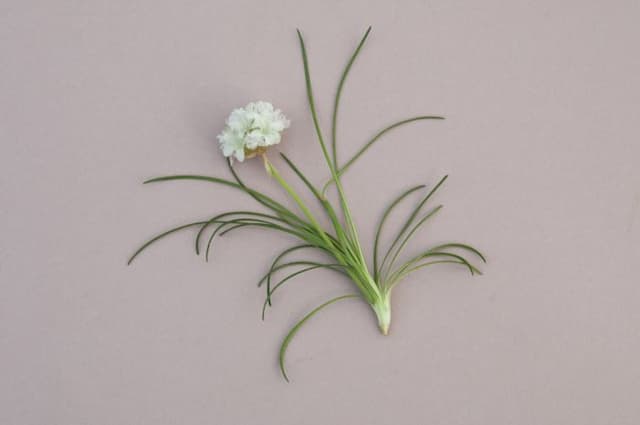Thrift Armeria maritima 'Splendens'

ABOUT
Armeria maritima 'Splendens', commonly known as the Thrift or Sea Pink, is a compact, evergreen perennial that forms a dense clump of grass-like, dark green leaves. The foliage is narrow and needle-like, creating a cushiony mound that serves as the backdrop for its signature feature: the vibrant, round flower heads. The blossoms cluster atop slender, upright stems that rise gracefully above the foliage. These flowers are a deep, bright pink, almost magenta in color, and have a pom-pom appearance, attracting attention in the garden when they bloom in the late spring to early summer. After flowering, the plant continues to maintain its neat, tufted habit, offering a consistent and tidy presence in the landscape.
About this plant
 Names
NamesFamily
Plumbaginaceae
Synonyms
Thrift, Sea Pink, Sea Thrift
Common names
Armeria vulgaris 'Splendens', Armeria maritima var. splendens.
 Toxicity
ToxicityTo humans
Thrift (Armeria maritima 'Splendens') is generally considered non-toxic to humans. There are no significant reports of poisoning or adverse effects from ingestion of this plant in humans. However, as with any plant not typically used for food, individuals may vary in their sensitivity, and it is always wise to avoid ingesting plants that are not specifically intended for consumption.
To pets
Thrift (Armeria maritima 'Splendens') is also generally considered non-toxic to pets. There are no widespread reports of toxicity or serious illness in pets resulting from the ingestion of this plant. As with humans, individual pets may have different sensitivities, and it is good practice to prevent pets from consuming non-food plants as a precaution.
 Characteristics
CharacteristicsLife cycle
Perennials
Foliage type
Evergreen
Color of leaves
Green
Flower color
Pink
Height
0.5 feet (15 cm)
Spread
1 feet (30 cm)
Plant type
Herb
Hardiness zones
4
Native area
Europe
Benefits
 General Benefits
General Benefits- Low Maintenance: Armeria maritima 'Splendens', commonly known as Thrift, is known for its durability and requires minimal care once established, making it ideal for gardeners seeking low-maintenance options.
- Drought Tolerance: Thrift is highly drought-resistant, making it a suitable choice for xeriscaping and water-conservation gardens.
- Erosion Control: With its dense growth habit, Thrift helps prevent soil erosion on slopes and in coastal garden settings.
- Attractive Flowers: The plant produces vibrant pink flowers that add a splash of color to the landscape from spring to early summer.
- Evergreen Foliage: Thrift maintains its attractive, grass-like foliage year-round, providing continuous greenery in the garden.
- Salt Tolerance: Being a coastal plant, Thrift can tolerate salty conditions, which makes it suitable for seaside gardens where other plants might struggle.
- Attracts Pollinators: The flowers of Thrift are attractive to butterflies and bees, helping to support local pollinator populations.
- Compact Growth: Its compact size makes Thrift an excellent choice for rock gardens, borders, and containers where space is limited.
- Cold Hardy: Thrift is resilient in cold weather and can survive in USDA hardiness zones 4 through 8, making it versatile for various climates.
- Versatility in Garden Design: With its cushion-like growth, Thrift works well in various garden styles, including cottage gardens, rockeries, and as a ground cover.
 Medical Properties
Medical PropertiesThis plant is not used for medical purposes.
 Air-purifying Qualities
Air-purifying QualitiesThis plant is not specifically known for air purifying qualities.
 Other Uses
Other Uses- Thrift 'Splendens', due to its cushion-like growth habit, can be utilized for green roofing projects, helping to absorb rainwater and provide insulation.
- Because of its high salt tolerance, Thrift 'Splendens' can be planted in coastal areas to help stabilize the soil and prevent erosion.
- The dense foliage of Thrift 'Splendens' makes it an excellent ground cover for suppressing weeds in garden beds or between paving stones.
- Thrift 'Splendens' can be included in butterfly gardens as it provides nectar for pollinators when in bloom.
- This plant can be used in xeriscaping, a landscaping method that reduces the need for irrigation, given its low water requirements once established.
- Thrift 'Splendens' can be used for miniature gardens or fairy gardens, contributing color and texture due to its small size and tufted appearance.
- The compact form of Thrift 'Splendens' is suitable for rock gardens, where it can accentuate natural stone features.
- Thrift 'Splendens' can serve as a natural dye plant, with different parts producing varying shades when used in traditional fabric dyeing processes.
- As a model-making material, the flower heads of Thrift 'Splendens' can be used to create miniature trees or bushes for architectural or landscape models.
- This plant can be potted in small containers, making it ideal for urban balconies or window boxes where space is limited.
Interesting Facts
 Feng Shui
Feng ShuiSea thrift is not used in Feng Shui practice.
 Zodiac Sign Compitability
Zodiac Sign CompitabilitySea thrift is not used in astrology practice.
 Plant Symbolism
Plant Symbolism- Resilience: Armeria maritima 'Splendens', commonly known as Sea Thrift, often grows in harsh coastal conditions, symbolizing the ability to endure and thrive in challenging environments.
- Beauty: With its vibrant pink flowers, Sea Thrift represents the concept of natural beauty flourishing in simplicity and adversity.
- Persistence: Its capacity to grow in poor soil and resist salty sea spray makes it a symbol of persistence and steadfastness.
- Adaptability: Sea Thrift's ability to adapt to its surroundings signifies flexibility and resourcefulness.
- Conservation: Often found in protected coastal areas, it can symbolize the importance of preserving natural habitats and biodiversity.
 Water
WaterThrift (Sea Thrift) prefers moderate watering, with the soil allowed to dry out slightly between waterings. Typically, a deep watering every week with about 1 gallon per square yard is adequate. In hot and dry climates or during the peak of summer, you may need to water twice a week. During the winter months, reduce watering as the plant enters a dormant phase. It's important to avoid overwatering Thrift as it can lead to root rot, especially in poorly draining soils.
 Light
LightSea Thrift thrives best in full sunlight, which encourages prolific flowering. Ideally, you should place it in a location where it will receive at least 6 hours of direct sun each day. However, it can tolerate some light shade, especially in regions with intensely hot summer weather.
 Temperature
TemperatureSea Thrift is hardy and adaptable, withstanding temperatures as low as 10°F and as high as 80°F. The ideal temperature range for Sea Thrift is between 50°F and 65°F, providing a cool to moderate environment that mimics its natural coastal habitat. Extreme heat can stress the plant, particularly if it's not provided with sufficient moisture.
 Pruning
PruningSea Thrift benefits from occasional pruning to promote vigorous growth and flowering. After the bloom cycle, typically in late spring or early summer, trim back the flower stems to encourage a second flush of blooms. Pruning is also an opportunity to shape the plant and maintain a compact, neat appearance. Seasonal cleanup, removing dead or brown leaves, is best done in early spring before new growth starts.
 Cleaning
CleaningAs needed
 Soil
SoilThrift (Armeria maritima 'Splendens') grows best in well-draining sandy loam with a pH between 5.5 and 7.5. A balanced mix of two parts sand, one part topsoil, and one part compost or peat moss is ideal to provide the nutrients and drainage this plant prefers.
 Repotting
RepottingThrift does not require frequent repotting and can typically be repotted every 2 to 3 years if grown in a container. Ensure proper drainage in the new pot to prevent water-logged soil.
 Humidity & Misting
Humidity & MistingThrift is tolerant of a range of humidity levels and does not have specific humidity requirements. It generally prefers dry to moderate humidity conditions, typical of its coastal habitat.
 Suitable locations
Suitable locationsIndoor
Place in bright light and use sandy soil; water sparingly.
Outdoor
Full sun, sandy well-drained soil, water moderately.
Hardiness zone
4-8 USDA.
 Life cycle
Life cycleArmeria maritima 'Splendens', commonly known as Sea Thrift 'Splendens', begins its life cycle as a seed, typically sown in spring or autumn. Upon germination, which requires a well-drained, gritty soil medium, the seedling emerges and establishes a rosette of narrow, grass-like leaves. Throughout its vegetative growth, Sea Thrift 'Splendens' develops a deep and extensive root system that allows it to tolerate poor soils and drought conditions. In late spring to early summer, it enters the flowering stage, producing dense, round clusters of vibrant pink flowers atop leafless stalks, attracting pollinators such as bees and butterflies. After pollination, the plant sets seeds, which can self-sow or be collected for propagation. Sea Thrift 'Splendens' is a perennial, so after the flowering stage, the plant will typically go dormant in winter, conserving energy to re-emerge and repeat its life cycle the following spring.
 Propogation
PropogationPropogation time
Spring-Early Summer
The most popular method of propagating the Sea Thrift (Armeria maritima 'Splendens') is by division, which is ideally done in either spring or early fall. This is when the plant is actively growing but not during the peak of summer's heat. To propagate by division, carefully lift the clump from the ground using a shovel, being sure to maintain as much of the root system as possible. Once removed, use a sharp knife or a spade to divide the clump into smaller sections, ensuring that each has a portion of the root system and several shoots. These sections can then be replanted in well-draining soil at a similar depth to which they were originally growing, spaced about 12 inches (approximately 30 centimeters) apart to allow for growth. Water the new divisions thoroughly to settle the soil around the roots and establish them in their new location.
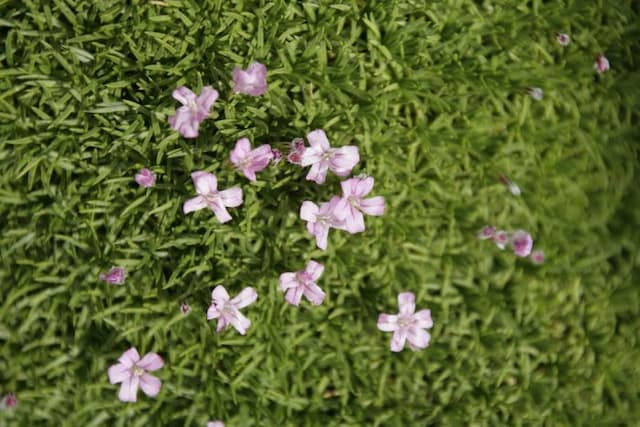
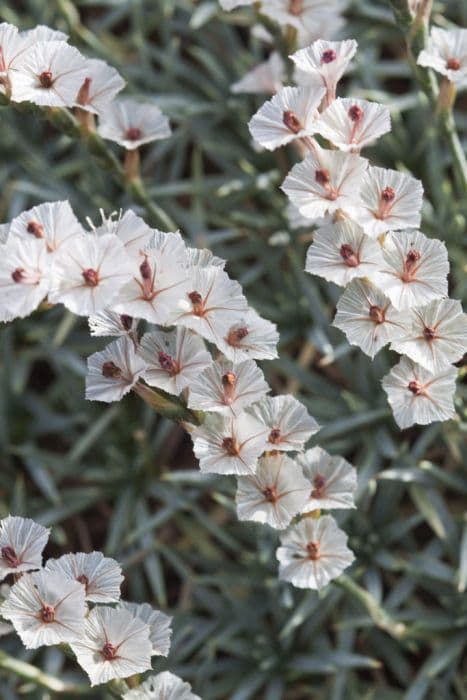
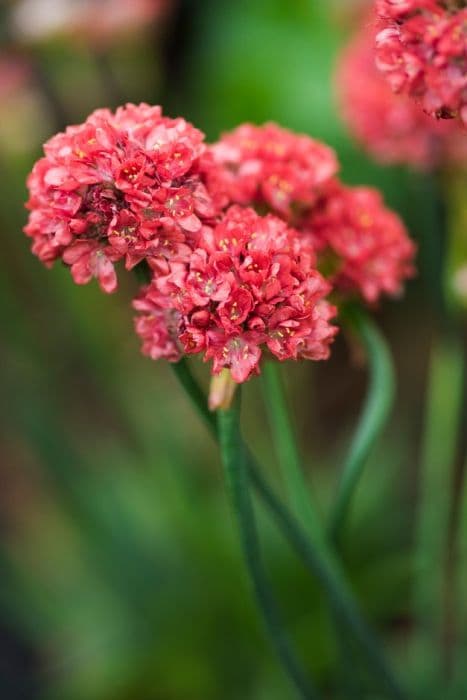
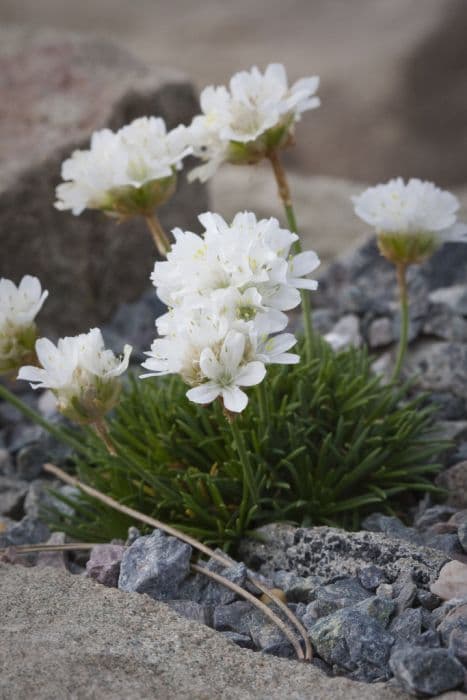
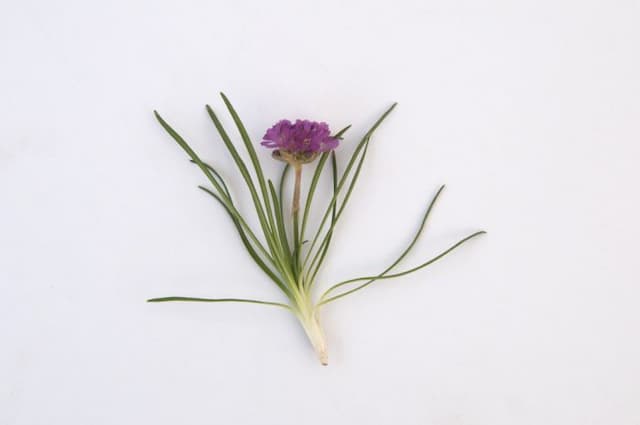

![Chinese plumbago [Forest Blue]](/_next/image?url=https%3A%2F%2Fplants-admin.emdemapps.com%2Fimages%2Fplants%2F%2Fimages%2F604b5c4db911f.png&w=640&q=75)


